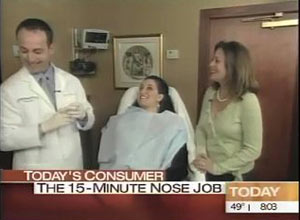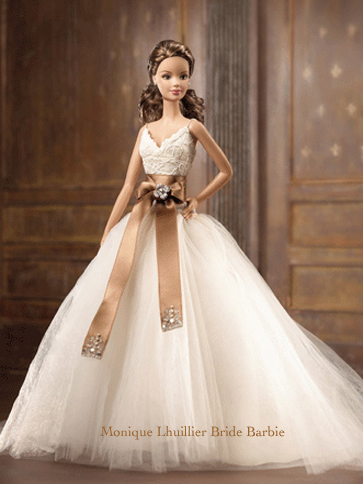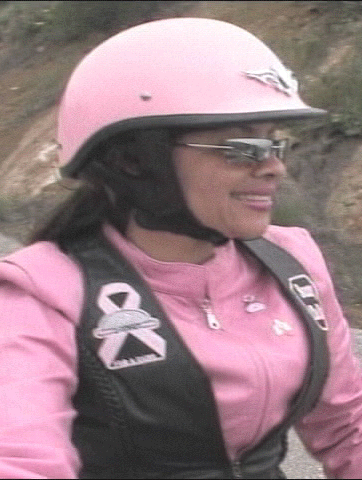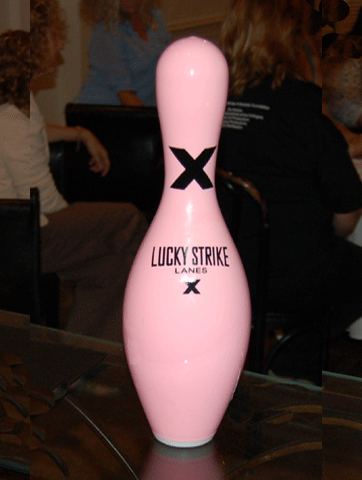Plastic Surgeon, Dr. Alexander Rivkin, M.D. – Expanding the Use of Botox ®
 I always thought my first visit to a plastic surgeon would include leaflets of models whose noses I wanted, or pictures of celebrities with the perfect profile. After all, I do live in Los Angeles, aka tinsel town, aka Hollywood fabulous—the land where everybody is a size 2, has a perfect nose, full lips, no character lines, and a 6-pack.
I always thought my first visit to a plastic surgeon would include leaflets of models whose noses I wanted, or pictures of celebrities with the perfect profile. After all, I do live in Los Angeles, aka tinsel town, aka Hollywood fabulous—the land where everybody is a size 2, has a perfect nose, full lips, no character lines, and a 6-pack.
I guess I could have scheduled a lipo-suction appointment, or a breast augmentation procedure, or maybe even a butt lift. But instead I found myself visiting probably the only plastic surgeon on the west side with a moral conscience. I guess I am not being fair. Cosmetic surgery is a valid profession. It’s about as warm as a corporate takeover. But nonetheless, a very necessary evil at times. My head spins when I hear about associates getting monthly botox injections, ribs removed, skin bleached or lasered. And I look in the mirror only to realize that I could easily fall into the same trap. Because I was blessed with fairly good genes, I am spared the repeated trips to these “clinics.” But to hear these surgeons speak, everybody will reach the age when he/she will need a bit of poison injected in his/her face. And apparently, these future clients are getting younger every day.
Dr. Alexander Rivkin is a Yale-trained facial cosmetic surgeon. He pioneered a groundbreaking non-surgical nose job procedure, and co-developed the non-surgical chin implant and non-surgical eyelid lift procedures. He has recently expanded the use of Botox® to treat his patients who are suffering from TMJ (temporomandibular joint disorder) and habitual teeth grinding.

The West Side Medical Spa is tucked away on Gayley Avenue near UCLA. It is unassuming on the outside, but wow, does it ever pack a punch on the inside. Dr. Rivkin and his non-invasive surgical cosmetic procedures have opened the floodgates to those everywhere who are afraid of going under the knife. And now, poor Jim with his terminally crooked nose can exercise his right to alter his looks (for the better) without a single incision.
How does a surgeon decide not to ever cut again? This Yale-trained facial cosmetic surgeon and UCLA faculty member decided to focus his practice exclusively on providing his patients with the latest in non-invasive, non-ablative cosmetic treatments. He understands that no one wants to “go under the knife.” He has dedicated his career to developing alternatives by creating a solution for his patients to rid them of their fears associated with cosmetic surgery.

I wanted to concentrate on non-surgical cosmetic procedures. I felt there was so much that was possible without doing surgery, and I could be creative in this field and “make up stuff.” I really couldn’t be creative in a more traditional practice. I have focused my efforts on new ways of accomplishing things that my patients want without having to put them through the ordeal of surgery.
I started out by using the things that were available. It’s exciting now because there are new injectibles and new lasers that are coming out. I believe that this is the future. So it’s very interesting to be on that wave and utilize these new things that are coming out. The start of my whole thinking was with the nose. I came up with a procedure that can straighten the nose without surgery. Afterwards, I’ve been listening to my patients and trying to go with some of the problems they would ask me about.
At one point a patient walked in and she was tense. She wore the tension around her jaw. And I was looking at her and noticed her jaw was square. I had read where these doctors in Asia had been injecting botox into the muscles of the jaws for girls who wanted to soften their jaw line cosmetically–just to look different. So I asked her if she had had a square jaw for a while, and she said ever since she had been grinding her teeth, her jaw had become more muscular and square. All night and during the day she would grind her teeth. Her dentist had given her devices to wear at night. But she would literally spit them out unconsciously in her sleep, or grind them up and spit out the pieces. This isn’t the first time I had heard of this. These people literally grind their teeth every night, working out these muscles, which eventually become huge and rock hard. So I thought to myself, “it’s only a muscle.” So I started putting botox into it. There were a bunch of little ones. She returned to me and reported that she stopped grinding. She looked more calm and felt more calm. “This is the best thing since sliced bread.” So I wrote to the company, and I said, “I am sure that this is something that had been tried.” And they confirmed it. It had occurred to other people as well. But it made sense.
You start grinding and your muscles just get stronger and stronger with each grinding episode. After a certain point, there’s nothing you can do to stop it because your muscles get too strong, and you’re doing it completely unconsciously. The more you do it, your teeth get worn down, but then when you’re aware of it, it makes the grinder more tense that they cannot stop grinding their teeth. But once you put the botox in, the muscle has the strength to chew and function properly, but it doesn’t have the strength to grind. Then it just stops.
For a layperson like me, I don’t really know what botox is. I have seen commercials and I even know of people who get botox injections, but what is it exactly? And is it harmful?

A couple hundred years ago, a German guy figured out why people were dying from bad sausages. It was a [bacterium] that they eventually named botulism, which means sausage person in German. As time went on, they figured out that it was poison that came out of the bacteria that is very powerful and its main effect was to paralyze muscles. People died from bad sausages because the poison paralyzed their breathing muscles and they couldn’t breathe. In about the 1970s, this one ophthalmologist thought about all the diseases where one muscle is too active, would spasm, or is too strong, and realized there was nothing to make the muscle weak, except for botulism, which he took and made safe for injection. They were tiny quantities that will stay in the muscle it’s injected in. It worked. So it should also work for cosmetic purposes. That is how botox came to be. The origin is this poison, but it’s gone through all these layers of change that it becomes a harmless protein that is injected. And through the injection, it doesn’t go through the rest of the body, nor does it have the side effects. Botox makes muscles weak. And the more you inject, the weaker that muscle gets. It’s completely dose dependent. There are no side effects. It’s not bad for you. It doesn’t go into your system. It’s perfect.
When people get botox, their face is paralyzed as a result of the practitioner administering the botox. They are probably injecting too much. But you can be creative with botox. You can put a little bit in for a small effect, or you can put in a lot for a bigger effect. You can really be very precise in terms of creating the kind of effect you want. It’s a very nice drug in that way.
So there are no long-term ill effects?
There are kids that have torticollis (when one side of the neck is active and they’re always bent over). We put botox in their neck and it straightens them up immediately. It’s amazing. We use about 10 times more botox for that than we would use cosmetically. They used that for years. Once you inject it, the muscle sucks it up immediately. It doesn’t go outside of it. But as you use it, you can forget to make certain expressions. So you have to retrain your body so that when you’re angry or concerned, you no longer make that expression. That habit of gesturing your face is gone.
For the TMJ, how many people are actually doing this procedure now, or are you the main one?
I am the main one. When I talk to dentists about it, they’ve never heard of it. It’s very new.
I was looking on your website and I noticed that you also offer nose jobs, chin implants, microdermabrasion, etc. I think it’s great because it is non-invasive. There’s no chance of infection. I also read that sometimes in surgery the implants shift. You’re saying that with the botox procedure it doesn’t shift? Can you explain to me how, for instance, a chin implant would be done? What is a standard thing you would do?

Surgically, to extend your chin, you have to get an operation. There is an incision underneath. You open up the skin, you slide in the implant, you close up the skin. You’re limited in terms of what the implant looks like. Surgically, there’s a limitation in terms of what the shape of the chin is going to look like. You’re limited by the implant that you have, and you’re also limited when you do it, because you can’t adjust on the fly. You have to surmise, “O. K., we will use implant #2.” Once it’s open, you can’t see aesthetically what it’s going to look like. You just have to hope for the best. I do injections. I take a filler substance called Radiesse(TM). It lasts for about a year and a half. I put it in the deeper layers of the skin—that’s where it belongs. When you put it in, you can mold it like clay. The substance is calcium based. It’s kind of like a lattice, or a scaffolding, where the body’s cells grow into it and it becomes like the skin. It’s soft, and you can’t tell the difference. When it first goes in, you can move it around, mold it. I look at the person in the chair and I can tell which direction I want to go—square it off, make it delicate, pointy, out, down, etc. You can make it be more appropriate to the individual who’s in front of you. Therefore, you can make it more precise, and fine tune it.
It lasts for a year and a half, meaning they have to come back for a repeat procedure?
In about six months, there are going to be fillers that last for about ten years. I am limited until that happens.
Why did you decide to go non-invasive?
The freedom to be creative is really important to me. You can’t do that in surgery. You have to do the procedure the way it is. You can’t make things up. A lot of people are getting needless surgery. I am the kind of surgeon that would counsel people away from surgery, and into non-invasive techniques. But I knew that being a part-time surgeon is no good. You have to stay on top of your game and do it all the time. I decided to go with what my heart was really into, which is this kind of stuff. I felt like this is where the future of Aesthetics is going to be.
Have you ever had a situation where someone came in to see you and it was just hopeless?
Oh yeah, and in those cases I just refer them to my colleagues. But most of the time, there is something that can be done.
It seems like the botox revolution is almost overkill. They make fun of it on TV shows like “Will and Grace,” and for someone who isn’t really into the red carpet, or that type of lifestyle, most people, unless they’re constantly being photographed, or are in the media, usually don’t go for botox, do they? Or am I wrong?
You’re wrong. A woman who’s over 30 in Los Angeles, chances are she has had botox in her face—across the board. No matter what she does, regardless of her social or economic standing, it’s very prevalent because it’s such an easy thing to undergo, and the results are fairly dramatic.
Do you think that it has spilled outside of the West and East Coasts?
Middle America and East Coast not as much, but it’s rampant in LA. The nice thing about it is you can’t tell. A successful procedure is where you can get done what you want where there is no huge bruising or side effects, and nobody can tell. You can’t tell when somebody’s had botox.
You can use botox to prevent wrinkles from happening. Some women in their 20s come in because they see their mom, and they know that they are going to develop wrinkles in the same spot, and they know that the more they move a certain way, the more it’s going to get etched in. So you put botox in there, you don’t move as much, and you don’t make the wrinkle.
Where do you see your practice in five years?
I ‘d like to create an institute. I am in the process of trying to do so now, and start training people. This is what people want, and should get. It’s simple, precise and powerful. It really takes some aesthetic awareness to do. You can have a technically good surgeon with no aesthetic understanding. You wind up having people walking around Rodeo Drive looking pretty weird—hollow-eyed women, surgery gone wrong. It happens all the time. Bad nose jobs, etc. Sometimes I get women who want big lips. I tell them it’s not appropriate. So many women over 40 with their entire upper lip looking like a duck. I’m not going to participate in that. I try to talk to them and offer other suggestions that might be more effective.
Those people that get the cosmetic improvements like nose jobs and chin implants, are they O. K. with coming back? How do you know when it’s time to redo?
Botox can last three months or six months. It depends on genetics, etc. A lot of physicians make a three-month appointment no matter what. I believe in happy patients. This is the future. My ambition is to change the way people think about plastic surgery. I want those people who want aesthetic changes to be better informed and awake, not looking for the extreme makeover, and understanding that there is a way to get what they want without going under the knife.
For more information, visit Dr. Rivkin’s website atwww.westsidemedicalspa.com
Interview by Kaylene Peoples
 Many little girls around the world relate their first fashion experience to the Barbie®doll. The very first Barbie®doll was introduced at the American Toy Fair in New York City in 1959. Barbie® was modeled after “Lillie,” a German comic strip, and the very first Barbie®, however, was named after Barbara (Barbie) Handler, whose parents noticed she and her friends had been playing with grown-up dolls as opposed to paper dolls and baby dolls. Even back then, little girls imagined what it would be like to be a grown-up—thus the Barbie®doll.
Many little girls around the world relate their first fashion experience to the Barbie®doll. The very first Barbie®doll was introduced at the American Toy Fair in New York City in 1959. Barbie® was modeled after “Lillie,” a German comic strip, and the very first Barbie®, however, was named after Barbara (Barbie) Handler, whose parents noticed she and her friends had been playing with grown-up dolls as opposed to paper dolls and baby dolls. Even back then, little girls imagined what it would be like to be a grown-up—thus the Barbie®doll.





